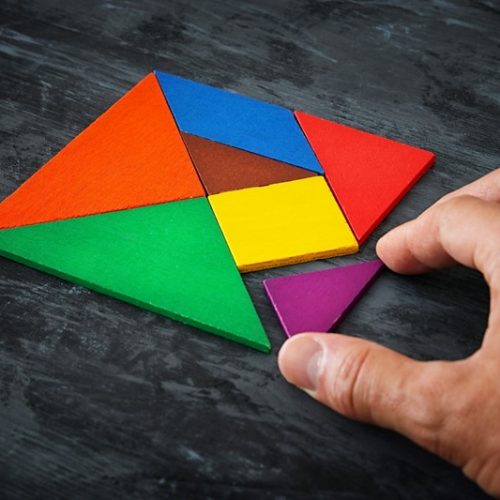

Many business owners focus on sales as the main driver of growth. Sales matter, but they are only part of the story. Real financial growth happens when a business retains profits. Keeping a portion of earnings inside the business, rather than extracting everything each year, creates stability, resilience and long term value. It is one of the most reliable ways for a business to strengthen its financial position.
Retained profit is simply the surplus left after all costs, tax and drawings or dividends have been paid. When owners choose to leave some of this in the business, the financial base becomes stronger. Cash balances increase, working capital improves and the business has more freedom to act. This is important because many opportunities appear only when a business is ready to respond. A new contract, a piece of equipment, or an unexpected staff change often needs quick decisions. Financial strength gives owners room to choose rather than react.
Another advantage is the reduction of financial strain. When profits are taken out in full, the business can become fragile. Seasonal changes, delayed payments, or rising costs can suddenly create pressure. Retaining profits reduces this risk. It smooths the ups and downs of trading and reduces reliance on overdrafts or short term borrowing. Over time, this lowers costs because the business is not constantly paying interest or reshaping its finances to manage cash shortages.
Retained profits also support growth by funding future investment. Whether it is new technology, better equipment, improved systems, or additional staff, every investment needs capital. Using retained profits means the business can invest without taking on unnecessary debt. This keeps control in the hands of the owners and protects future cash flow. In many cases, even small retained amounts, built up steadily, can support meaningful improvements.
There is also a psychological effect. When owners see their business building reserves, confidence grows. Decisions become more strategic and less driven by short term pressures. This confidence often leads to better long term planning, more thoughtful hiring and a clearer focus on profitability rather than turnover alone.
Finally, strong retained profits increase the value of the business. Buyers look for organisations with reliable earnings, low debt and healthy reserves. A pattern of retaining profits signals discipline and financial strength, which can significantly improve valuation.
Retaining profits is not about restricting personal income. It is about giving the business the capacity to grow, adapt and remain competitive. When owners take a long term view, retaining profits becomes one of the simplest and most effective tools for building financial strength.

Most business owners know that progress matters, but many still hesitate when it comes to planning. It can feel like an extra task or something that only large companies need to worry about. Yet, in practice, steady planning is one of the simplest ways to create real progress in any small or medium sized business. The link between the two is stronger than many people realise.
Planning works because it forces clarity. When business owners pause to think through priorities, patterns and pressures, they begin to see what is really driving results. Cash flow issues, capacity limits and pricing decisions all come into focus. This clarity helps owners make better choices, because they can see which actions will genuinely move the business forward and which are distractions. Without planning, decisions are often reactive and progress becomes slow or inconsistent.
Regular planning also builds momentum. A short monthly review of sales, costs, workload and upcoming commitments can help owners stay ahead of issues. They spot pressure points sooner and have time to adjust. Small, steady actions taken throughout the year often make far more difference than a single big push at year end. The cumulative effect is smoother trading, fewer surprises and a clearer path towards goals.
Another benefit is accountability. When owners write down their intentions, it becomes easier to measure progress. Plans do not have to be complex. A simple list of priorities, actions and expected outcomes is enough to bring structure. Even this light level of discipline strengthens focus and encourages follow through. Over time, owners start to recognise how much difference these small habits make.

Many small businesses rely on a mix of overdrafts, card facilities and short term loans to maintain day to day cash flow. During the past year banks and alternative lenders have become more cautious, and several indicators suggest that credit conditions will tighten further during 2026. For business owners, a little early preparation can make a noticeable difference.
Lenders are placing greater emphasis on consistent record keeping, realistic forecasts and clear evidence that a business understands its cash cycle. This means that up to date bookkeeping is no longer just a compliance task. Regular management information can demonstrate stability, provide reassurance to lenders and highlight any seasonal pressures that may need attention.
It is also sensible to review existing credit facilities. Many overdrafts and business loan agreements include renewal terms, and these can be harder to negotiate if left until the last moment. Checking the renewal dates, interest rates and any security requirements can help avoid unexpected changes that affect cash flow.
Businesses that rely heavily on card funded working capital or revolving credit should consider whether these facilities remain suitable. Even a small increase in interest rates or a reduction in limits can put pressure on margins, particularly in sectors with tight cost structures.
Planning ahead can reduce risk and improve financial resilience. Reviewing cash flow forecasts, maintaining timely financial records and having early conversations with lenders can help small businesses enter 2026 with greater confidence and fewer surprises.

Current estimates suggest that there are around 5.6 million businesses operating in the UK. This figure comes from the Department for Business and Trade and the Office for National Statistics. What stands out is that most of these businesses are very small. The vast majority are run by one person, without employees, either as sole traders or small limited companies. Only a small proportion of the total business population consists of medium or large organisations, yet those larger firms account for a significant share of total employment and economic output.
Around 4.1 million of the 5.6 million businesses are sole traders. These include contractors, tradespeople, freelance workers, independent professionals, and small retail or service businesses. A further 1.1 million are limited companies. The remainder are partnerships or other legal forms. Approximately three quarters of all UK businesses have no employees at all. They are operated directly by the owner.
The UK has a relatively low barrier to starting a business. Registering as self-employed is straightforward, and forming a limited company is inexpensive and quick. This ease of entry encourages individuals to test ideas, create income streams, or change the way they work. Digital platforms have also expanded opportunities. For example, selling through online marketplaces, providing services remotely, or trading through social media channels has become increasingly common. These models enable people to run small businesses from home, with minimal overheads.
There is also a lifestyle element. Many individuals value autonomy over working hours and location. Self-employment or small business ownership provides this flexibility. Some move into business ownership after redundancy or a change in circumstances, while others start with the intention to grow something long term.
Although many of these businesses operate on a modest scale, collectively they play a major role in the economy. They support local employment, supply chains, and community activity. They bring specialist skills to market and allow rapid adaptation when customer needs change. Small businesses tend to be agile and close to their customers.
However, small businesses also face challenges. These include managing cash flow, understanding tax obligations, accessing finance, and dealing with administrative requirements. The owner often carries full responsibility, which can create pressure. Support, planning, and advice can therefore have a very positive impact.
The main message is that small business is central to the UK economy. It is diverse, active, and resilient, and it continues to shape how people work and earn today.

A limited company is a separate legal entity. In normal circumstances, its debts belong to the company, not to the directors. This is one of the central advantages of incorporation. However, the protection is not absolute. Directors have duties in law, and if those duties are not met, there are situations where personal liability can arise. Understanding the main risk areas helps directors manage their responsibilities with confidence.
The most common route to personal liability is through personal guarantees. These are often required when arranging finance or long term commitments. They appear in bank loans, leases, asset finance, invoice discounting and sometimes supplier credit arrangements. A personal guarantee means that, if the company cannot pay, the director promises to pay instead. Many directors accept guarantees without fully recognising their implications, sometimes as part of standard paperwork. If the business later becomes insolvent, the creditor may enforce the guarantee directly against the director.
Another area where liability can arise is wrongful trading. This occurs when directors continue to trade at a point where they knew, or should have known, that the company was unlikely to avoid insolvency. Once insolvency becomes likely, directors must act to minimise losses for creditors. Continuing to take new orders, incur new debts, or draw full salaries without regard to the company’s position may be seen as failing in that duty. If wrongful trading is found, a director can be required to contribute personally towards the shortfall to creditors.
Fraudulent trading is a more serious matter. This involves intent to deceive. Examples include deliberately misleading creditors, falsifying records, or taking payment from customers when it is clear the business will not be able to supply. In these cases, personal liability is likely, and criminal sanctions may also be possible.
Misfeasance relates to breach of duty. Directors must act in the best interests of the company and use company assets responsibly. Issues arise where funds are drawn inappropriately, company assets are used personally, records are not maintained, or tax liabilities are ignored. If the company enters liquidation, transactions will be reviewed. Directors may be required to repay sums that were taken improperly.
HMRC can also pursue directors personally in some situations. If there is repeated or deliberate non-payment of PAYE, NIC or VAT, HMRC may issue a personal liability notice. This is generally used where behaviour is seen as deliberate or reckless rather than a one-off difficulty.
If a company fails and a related business continues afterwards, this can also be examined. Forming a new business after insolvency is not itself prohibited, but if it appears to be an attempt to avoid debts unfairly, directors may face investigation or disqualification.
Good practice reduces risk. Clear financial records, cash flow forecasting, early advice when trading becomes difficult, care with drawings, and caution when asked to sign guarantees all help protect directors.

Taking on the role of a company director is more than holding a title. Directors have legal duties that shape how a company is run, how decisions are made and how risks are managed. These responsibilities exist to protect the business, its shareholders, employees and anyone who deals with the company. Even in a small or family run company, these duties are taken seriously and can have personal consequences if ignored.
Directors must act in the best interests of the company. This means making decisions that support the long term success of the business, rather than personal gain. It also means considering the interests of employees, customers, suppliers and the wider community where relevant. Directors are expected to use reasonable care, skill and judgement. If a director has particular expertise, such as finance or technical knowledge, a higher standard may be applied in those areas.
Financial oversight is a key responsibility. Directors must ensure that accounts are kept up to date, tax filings are made correctly and that the company is solvent. If the company begins to face financial difficulty, directors must take action early. Continuing to trade while knowing the company cannot meet its debts can lead to personal liability.
Directors must also avoid conflicts of interest. If a personal interest overlaps with a business decision, it must be declared. Transparency and good record keeping are essential.
Good governance is not about bureaucracy. It is about understanding the business and managing it responsibly. Regular board discussions, clear financial reporting and practical risk management go a long way to protecting both the company and its directors.

Many businesses arrange insurance in the early days and then only look at it again when something changes, or when a renewal comes around. The difficulty with this approach is that risks evolve over time, and gaps in cover often only become visible when there is a claim. A short review with an insurance broker can help ensure that your policies reflect how the business currently operates and that protection remains adequate.
Business interruption
Business interruption cover is often misunderstood. It is designed to replace lost income while the business recovers from damage or disruption. The key issue is whether the indemnity period is long enough. If specialist equipment or premises are involved, recovery may take longer than expected. A broker can help evaluate assumptions and adjust cover accordingly.
Cyber risk
Cyber-attacks are now common across all sectors, not just large companies. Standard insurance policies rarely cover data breaches or ransomware incidents. Cyber insurance provides technical support as well as financial cover, which can make a major difference to recovery time.
Directors and officers
Directors and senior managers can face personal claims in relation to decisions they make. Reviewing Directors and Officers cover ensures that the right individuals are protected and that policy limits match the scale of business activity.
Supply chain and contractors
If contractors or suppliers are key to operations, it is worth checking who is responsible for what. Contracts should make insurance obligations clear, and your own policies should reflect any outsourced work.
Asset values and inflation
Rising costs mean many assets are now underinsured. Reassessing replacement values can prevent reduced payouts in the event of a claim.
A brief annual review can provide reassurance and avoid unwelcome surprises. If you would like support preparing for that conversation, we can help.

For any business, knowing how to value and price what it sells is fundamental to success. Yet many small firms still rely on guesswork or simply copy competitors’ prices without understanding whether their own costs, quality or value proposition justify those figures. Accountants can play an important role in helping clients to take a structured approach to pricing and valuation, ensuring that products and services deliver both profit and sustainability.
Understand the true cost base
The starting point for any pricing decision is to establish the real cost of production or service delivery. This includes not only direct costs such as materials, wages and subcontractors, but also a fair allocation of overheads such as rent, utilities, marketing and administration. Once a business has a full understanding of its cost base, it can identify the minimum viable price required to cover costs and earn a profit margin. Accountants can assist by reviewing costing methods and ensuring that indirect costs are not overlooked.
Add value, do not just add margin
Too many businesses apply a simple markup to costs and call it pricing. A more strategic approach looks at the perceived value from the customer’s perspective. What problems does the product or service solve, how is it different and what benefits does it offer compared with competitors? Value-based pricing allows firms to charge more when the customer sees a clear benefit or saving. For example, if a service saves a client several hours each week, the price can reflect part of that time saving as additional value.
Use segmentation and flexibility
Not all customers are the same and pricing does not have to be either. Offering packages or tiers can help serve different market segments without undercutting core pricing. For example, a “standard,” “premium,” and “enterprise” level can target different budgets and expectations. Seasonal discounts, early payment incentives, or loyalty pricing can also be effective if managed carefully. The key is consistency and transparency.
Monitor performance and adjust regularly
Pricing is not a one-off exercise. Markets, costs and demand all change. Businesses should regularly review their margins, conversion rates and customer feedback to assess whether their pricing remains competitive and profitable. Accountants can add value by providing performance reports and benchmarking against industry standards.
If you would like help reviewing your pricing structure or working out how to value what you sell, please get in touch. We can help you analyse your costs, benchmark performance and design a pricing model that supports long-term profitability.

Change is part of every business journey. Whether it is prompted by new technology, regulation or shifts in the market, the ability to adapt determines how well a business performs in the long term. Yet managing change is not simply about introducing something new. It is about understanding what needs to change, why it matters and how to make the transition smoothly while keeping your team and clients on side.
The most successful businesses approach change as a structured process. It begins with recognising the need for change. This might come from declining profits, new reporting requirements, or a drive for greater efficiency. Once the need is clear, the next step is to define what the future should look like and what success will mean in measurable terms. For instance, a firm may aim to automate routine tasks, improve cash flow management or expand into new markets.
Good planning follows. This includes identifying resources, setting timelines, assigning responsibilities and communicating openly with everyone involved. People need to understand what is happening, when it will happen and what it means for them. Regular updates, clear information and honest answers help to reduce anxiety and build commitment.
Implementation is where plans become action. Training, testing and feedback are all essential at this stage. It is important to remain flexible and to make adjustments as issues arise. Small, visible wins also help to maintain motivation and demonstrate that progress is being made.
Once changes are in place, they need to be sustained. This means updating policies, embedding new processes into everyday work and making sure that improvements are monitored. Without ongoing attention, even successful changes can fade away over time.
Every change, whether large or small, brings both challenges and opportunities. The process can seem daunting, but a clear plan and the right guidance make a real difference. The aim is to move forward with confidence, maintaining control and ensuring that the change strengthens the business rather than disrupts it.
If you are facing a change process, whatever that might be, then pick up the phone. We can help you plan and meet your challenges.

Every successful business, no matter how innovative or fast-growing, ultimately depends on one simple measure: solvency. A solvent business is one that owns more than it owes, with sufficient assets to cover its debts and the means to continue trading. It is not just an accounting concept, but a signal of underlying financial health and resilience.
Solvency shows that a business can meet its obligations, even during difficult trading periods. When liabilities are kept under control and supported by tangible or liquid assets, a company is less vulnerable to cash flow shocks, rising interest rates or late payments from customers. It provides confidence to suppliers, lenders and investors that the firm is being managed prudently and that short-term fluctuations will not lead to crisis.
Maintaining solvency also provides flexibility. A business that operates with positive net assets can reinvest in growth, negotiate better borrowing terms and respond quickly to new opportunities. In contrast, firms that operate on the edge of insolvency often spend much of their time managing creditors, juggling payments or seeking emergency funding, which can distract from long-term strategy.
There are wider benefits too. Solvent companies tend to attract better staff and more loyal customers, as both groups are reassured by signs of stability. Regulators, insurers and trade bodies all view solvency as a key indicator of sound governance and reliability. For owner-managed firms, it can also make a significant difference when planning for succession, exit or sale, as buyers and investors typically value strong balance sheets and minimal debt exposure.
Regular financial reviews, realistic cash flow forecasts and disciplined control of borrowing are all essential to sustaining solvency. While profit is the measure most often discussed, solvency is the foundation that supports it. A business may trade at a loss for a short period and recover, but once it becomes insolvent, the options narrow rapidly. In uncertain economic conditions, staying solvent remains the clearest mark of real business strength.